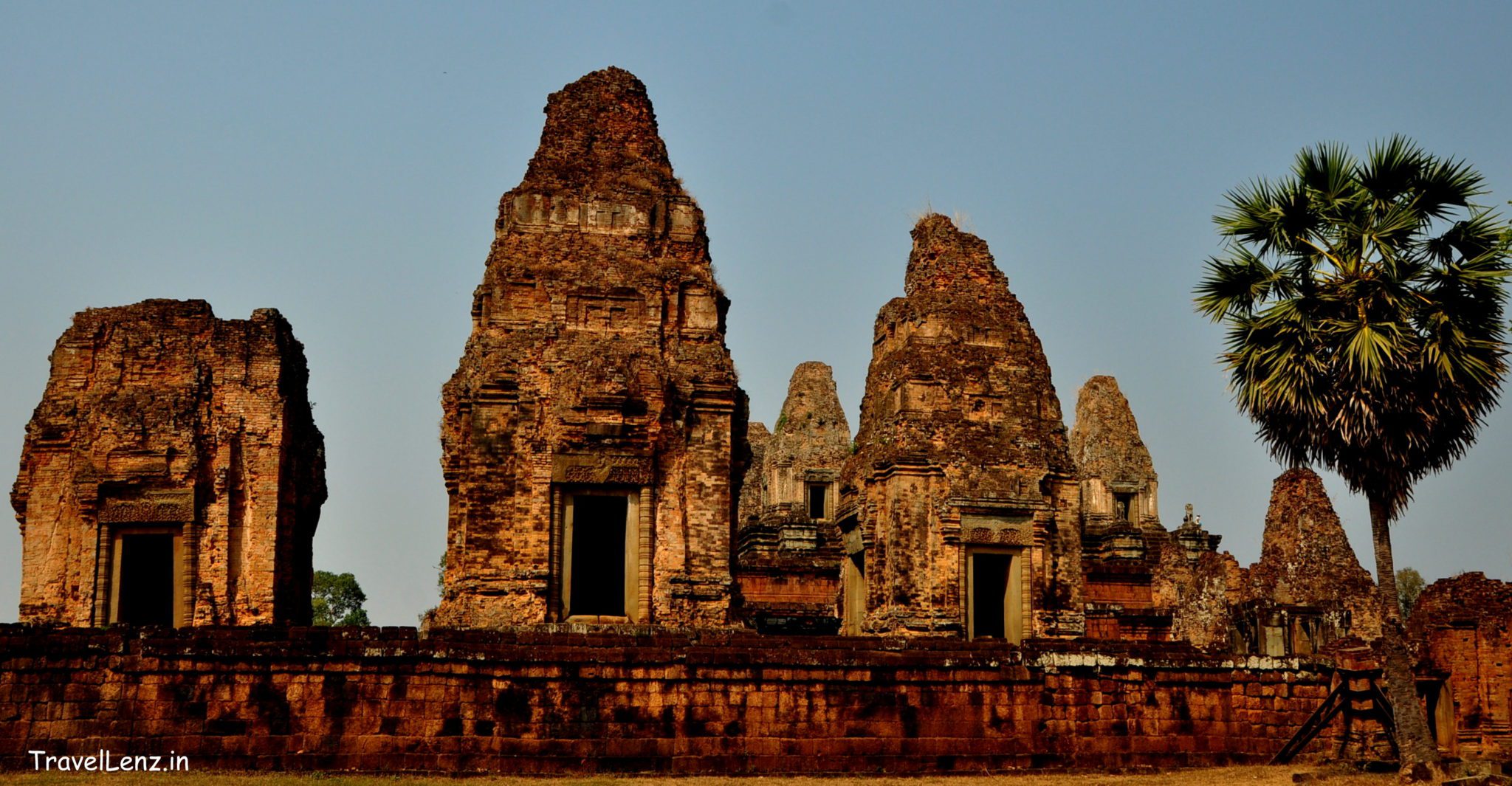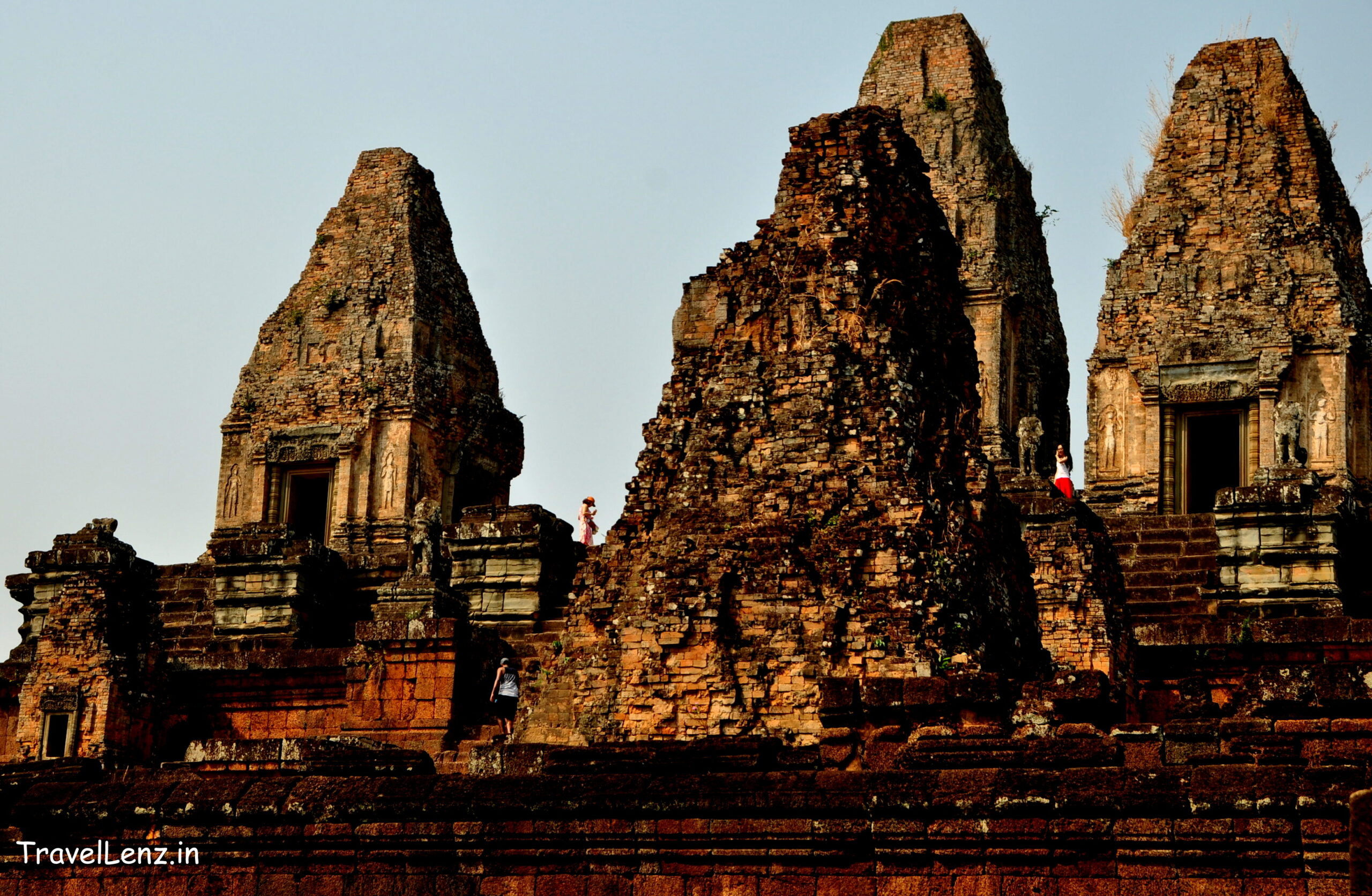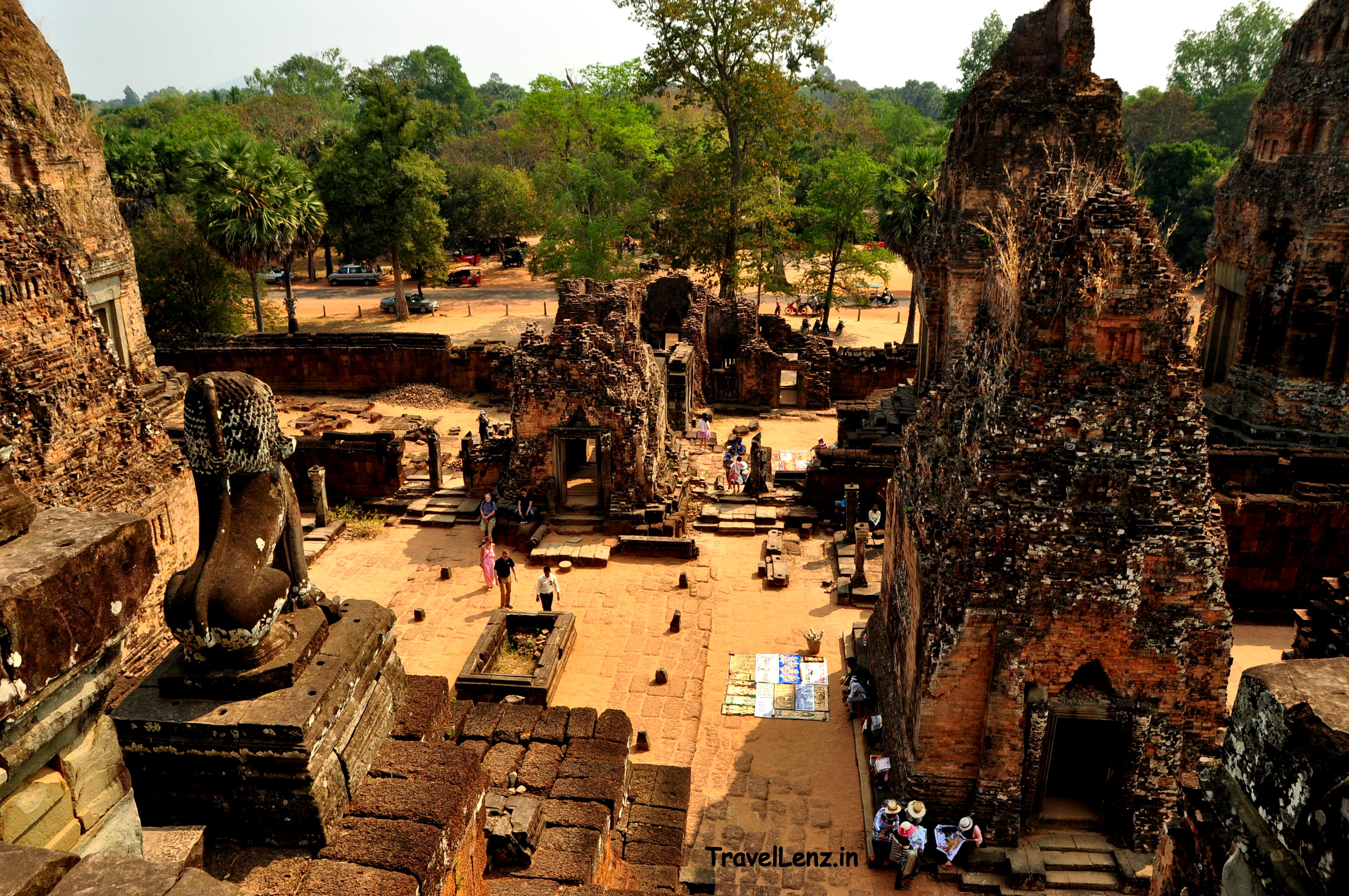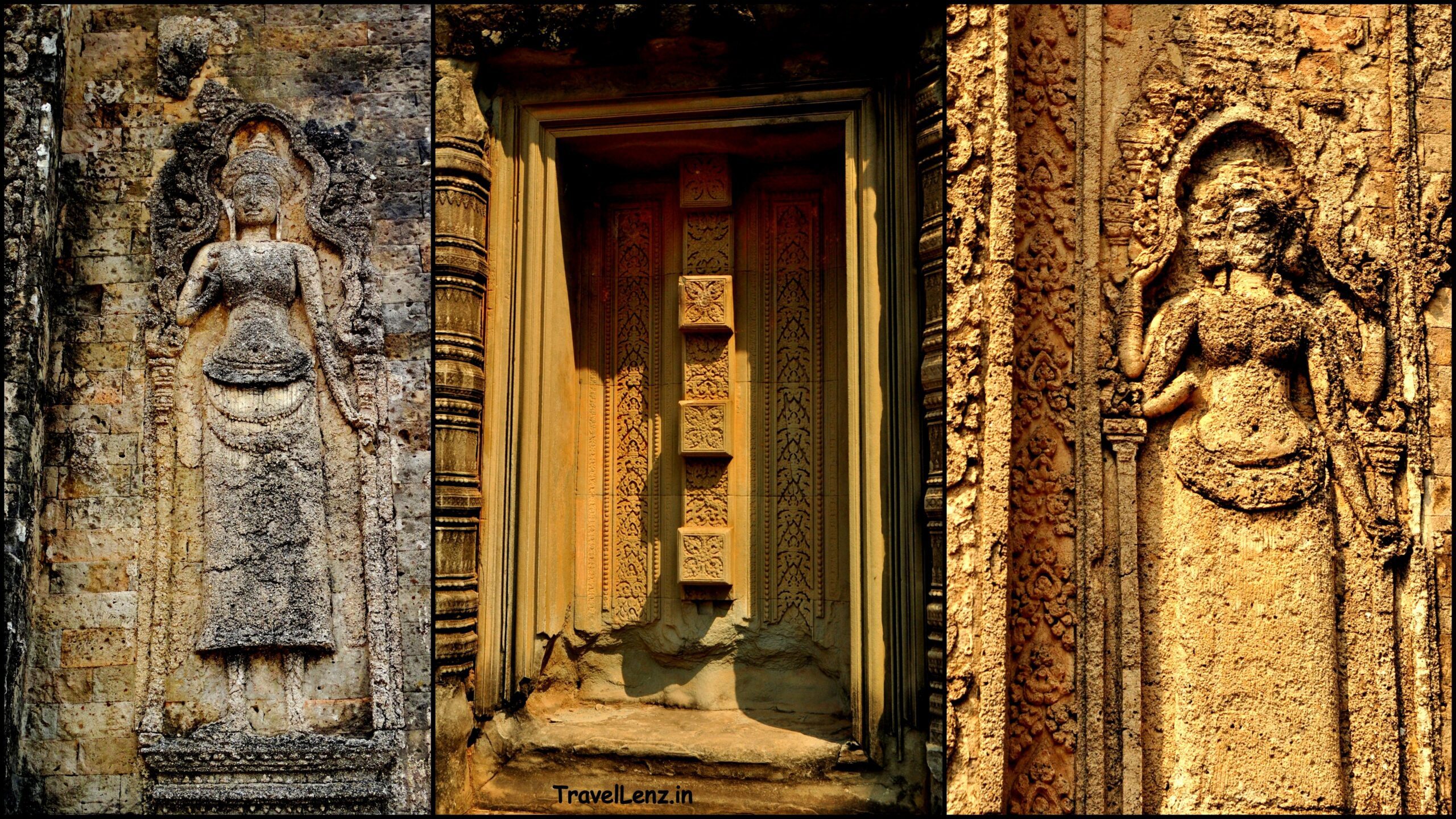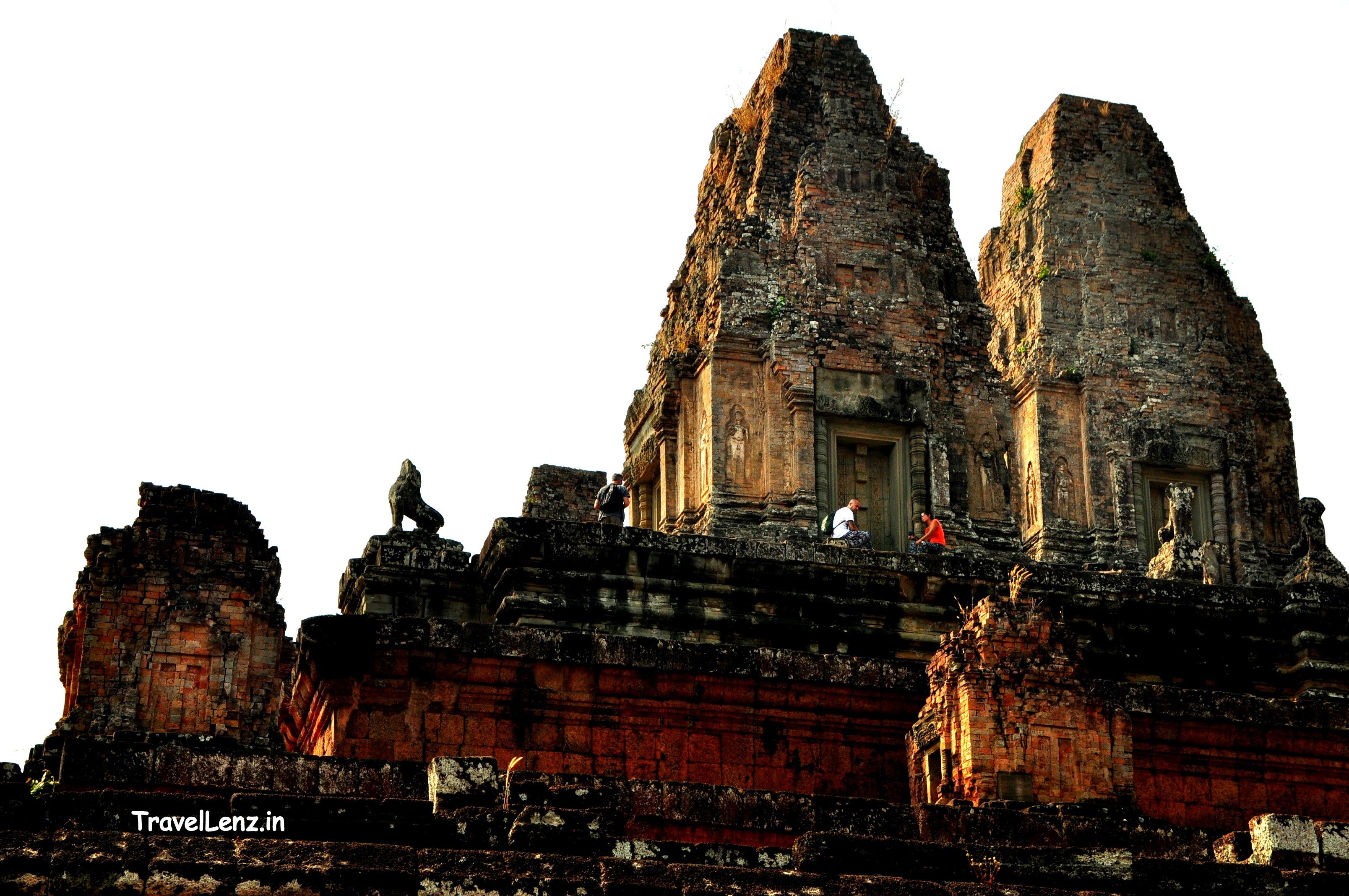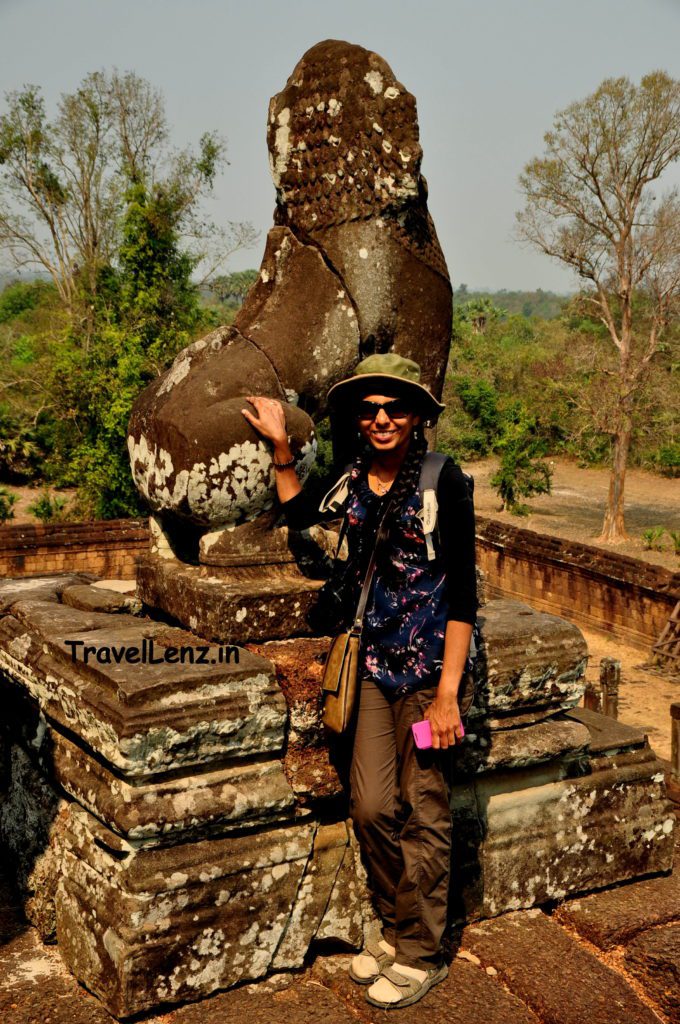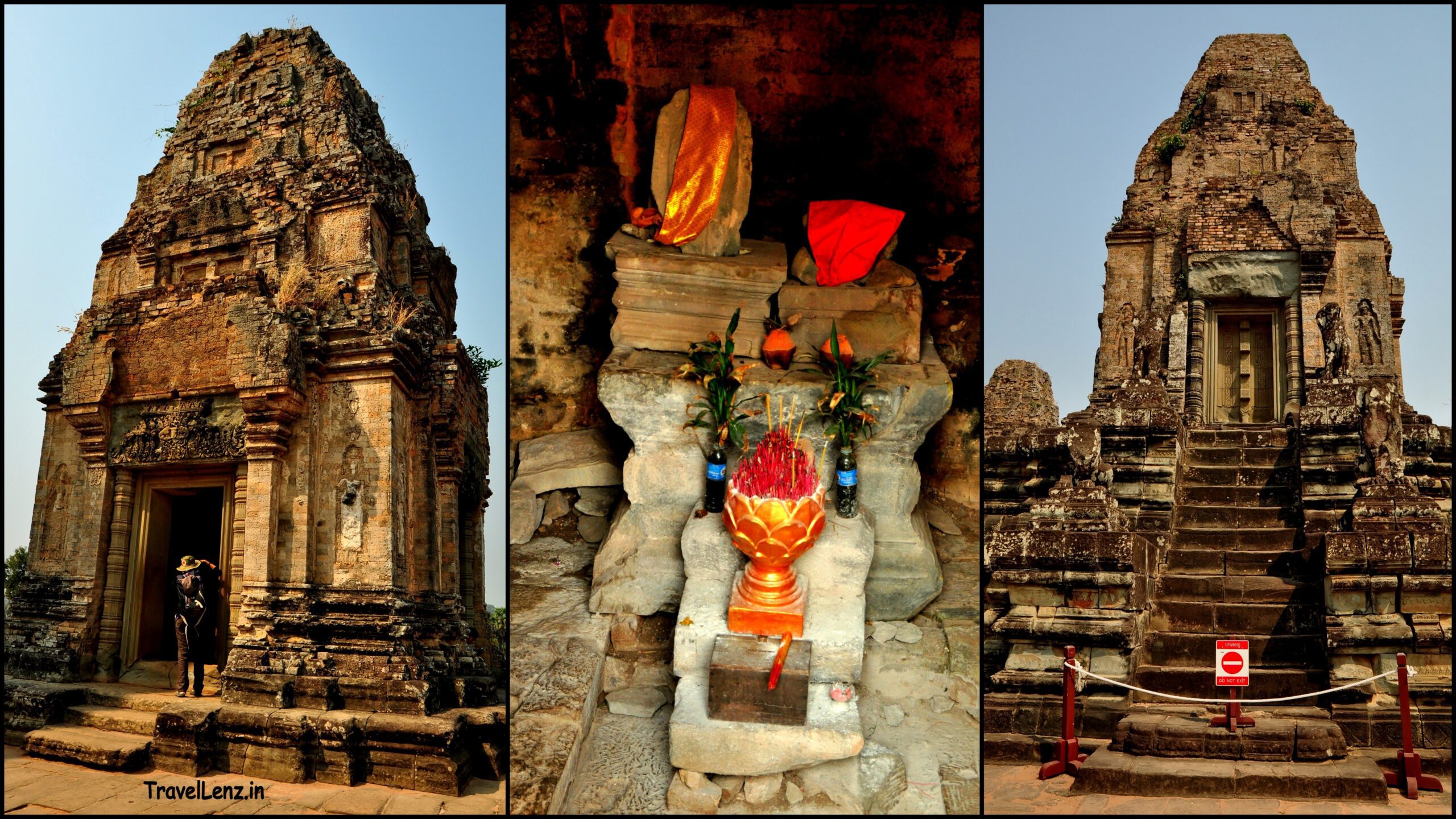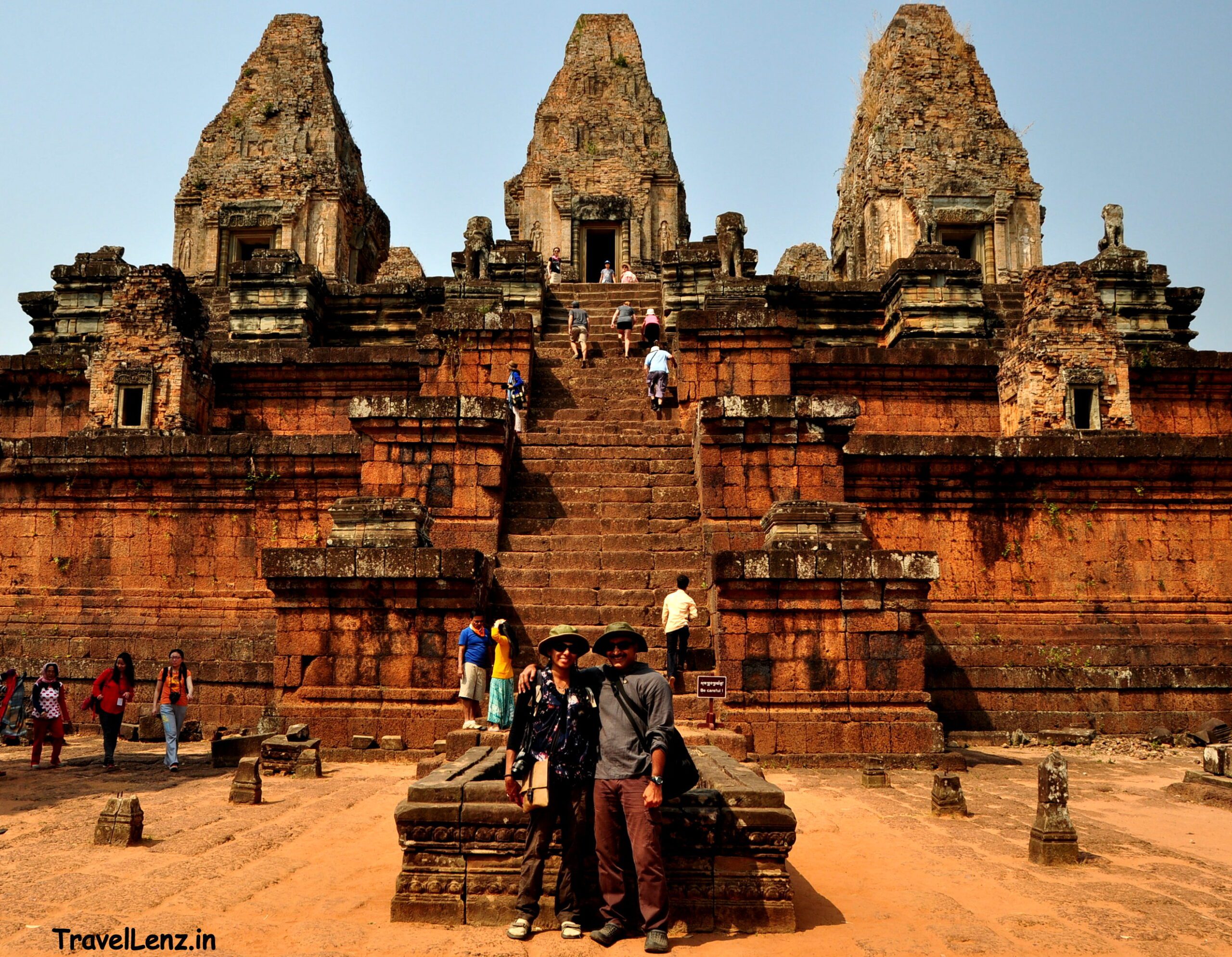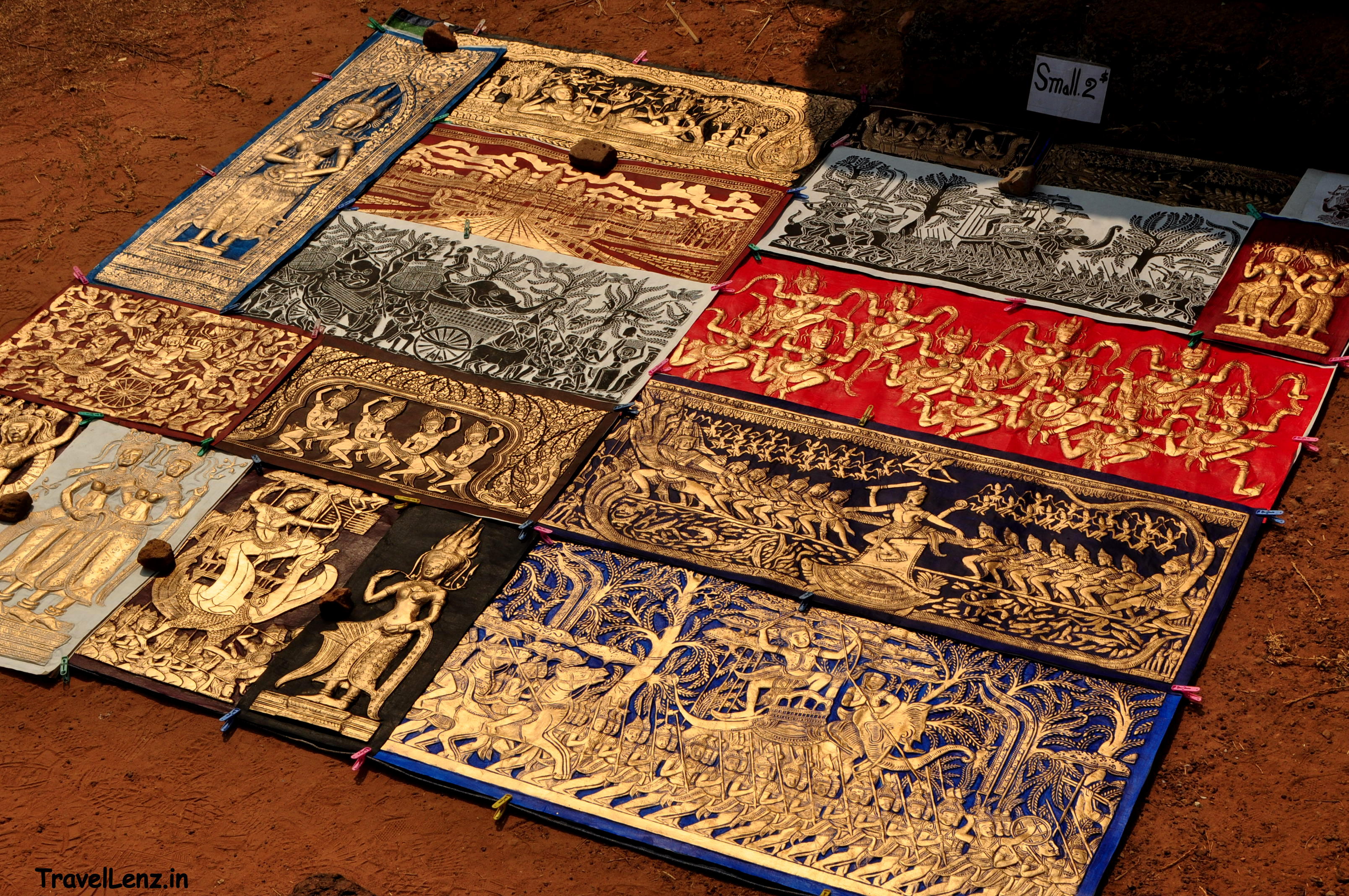Last Updated on May 21, 2021
After the sunrise at Angkor Wat and the bas-reliefs, it was time for our next stop. We rode around the Sras Srang moat and headed forward for a few kilometers until we reached the ruins of the Pre Rup temple.
Pre Rup temple
From a distance, Pre Rup looked like a pile of stones. But as we alighted from our vehicle and entered the complex we started to understand the beauty of the place.
The temple is built on an artificial mountain built from rusty-red laterite and brick. There were many towers and pillars on the ground level, all in a dilapidated state. From the ground level, we could make out that the temple rose in three steep tiers.
There were remnants of a series of long galleries and pillars running parallel to each side of the temple. Tes mentioned that parallel galleries were replaced by continuous galleries later.
Stone cistern
Pre Rup translates as “turn the body” and the local Cambodians believe that funerals were conducted in this temple. Traditionally during funerals, the body had to be rotated as the service progressed. And to confirm this belief, a large cistern was found on the grounds of the temple.
The stone cistern was located at the base of the temple steps. A few historians believe
that rather than being used for cremation ceremonies, the cistern was the base of a Nandi idol as the temple was dedicated to Lord Shiva.
View from the top
We climbed up the steep laterite steps to the top platform of Pre Rup to find five towers. Just like Angkor Wat, Pre Rup had five towers that were arranged in a quincunx, one at each corner of the square and one in the centre. There were deities carved on either side of all the tower’s eastern doors; the other three doors were false doors.
Some of the carvings looked incomplete or only lightly chiseled onto the brick. As if only the base of the figures was carved and the highly detailed plasterwork was yet to be done. There were many small circular holes on the brick walls, intended as an aid to bind the stucco to the brick.
At the top of the stairs, there were guardian lions that had vandalised faces.
We found a small Buddhist shrine at the summit where locals were praying and making offerings.
Popular sunset point
From the top platform, we got a sweeping view of the surrounding countryside and jungle.
At the entrance, we had found a few stalls where locals were selling souvenirs. Other than the silk scarves, clothes jewelry, wooden and stone carvings, what caught our eyes were paintings etched on colourful thick papers. We had to buy one (the small maroon and golden piece on the right-hand top position now adorns our drawing room wall).
Pre Rup is also a popular place for sunset viewing and gets pretty crowded in the evenings. We imagined how majestic the temple might have looked in the setting sun, with its laterite bricks accentuating the colour on the temple walls and its terraces and platforms guarded by stone lions. Now the temple lay in ruins – a little more than piles of red stone blocks.
Our next destination was one of the furthest and one of the prettiest temples we had visited during our stay in Siem Reap, Banteay Srei.


